For a collector of period items, there is nothing more vexing than a fake offered as an original, vintage item. The higher the rarity, the greater the amount of “fakes” circulate. Although the field of collecting merchant marine insignia is small and insignia is relatively undocumented, spurious items often appear with incorrect attribution. Exploiting this lacuna, from the 1980s through the early 2000s, a single individual muddled the field and thoroughly confused collectors: Alan C. Beckman of Fox Militaria. Mr. Beckman never purported his creations to be “Official Issue” – those reselling them do now. Since education for the collector is critical, hopefully, this post will help set the record straight.
Particularly frustrating in researching and collecting Second World War Merchant Marine items is the lack of documentation. An early researcher in the field Rudy Basurto quipped in personal communication, “manufacturers be damned.” It is no wonder – the American Merchant Marine at the time was marshaled under the guidance of the War Shipping Administration to transport people and materiel in support of the war; and, with each re-alignment in Federal organization, insignia changes followed suit. Managing steamship operators did not issue handbooks or pamphlets detailing their uniforms, and government agencies – such as the United States Maritime Service – did not leave behind uniform circulars like the United States Navy. Compounding the issue, insignia houses have come and gone with their archives going the way of the wastebasket. With scant clues as to who made what insignia when and for whom, the overall lack of information has lead to speculation and guesswork.
NB.: If you wish to skip my editorial, below the text are a series of galleries of some of the items from Mr. Beckman’s stock.
Enter Alan C. Beckman
Such an unresearched and poorly documented field as Merchant Marine insignia is ripe for unscrupulous insignia dealers. No one dealer seems to be more reviled than Alan C. Beckman, the ex-proprietor of Fox Military Equipment|Fox Militaria|eBay seller usnusa. When Manion’s had a public marketplace, he set up shop there as well. Through these various channels, Mr. Beckman was a distributor and manufacturer of many restrikes, fantasies, and cinderellas. Once collectors found him peddling bad wares, they branded him as a persona non grata. Since he never gave full provenance or a complete description of the stock he sold, it enabled him to feign innocence when an angry customer confronted him.
Before he passed away, I occasionally corresponded with Mr. Beckman and learned of how he was able to offer such a broad array of items. He began manufacturing items in earnest in the early 1990s through the mid-aughts. Through a fluke of luck, I discovered he placed a large order for NOAA wings with International Insignia in Rhode Island. After a conversation with International Insignia, I learned most of Mr. Beckman’s items were not period, but restrikes. It is worth mentioning International Insignia is a supplier to Vanguard Industries and holds the archive of N.S. Meyer dies; the proprietor of International Insignia is the son of the last president of N.S. Meyer, Robert Raeburn. Through his contract with International Insignia, Mr. Beckman was able to offer many high-quality items and cinderellas (which may be collectible in their own right if one is into fantasies). Mr. Beckman’s spray-painted casts were his own experiments and came as a result of him trying to mass-produce items for market.
It is useful to offer some definitions; a leader in the field of Phaleristics – Alexander J. Laslo – provided an important terminology in his Interallied Medals of World War I. Coming from the world of numismatics, I find they offer a useful framework when considering merchant marine insignia and cap badges in particular:
Official Issue: produced for general distribution by a government or commercial firm under contract, license, or sanction of the issuing authority. Collectors will most often want to acquire these items. These may be found either unissued or used. Depending upon one’s collecting interests, one or the other is valued. For the latter, provenance is often a key determiner of value.
Reissue: A later strike of an official issue. This may involve die or finish variations. I would also include far later official issues of items; items such as the Merchant Marine discharge button currently issued by Vanguard fall into this category – same die, different bronze alloy, but given to veterans by MARAD.
Unofficial Issue: An item produced by a commercial firm and available from the firm or a vendor for the purpose of providing seamen a replacement of the official issue or an interim item to wear until the distribution of the official issue. These are “theatre manufactured” items and include sand casts of cap badges as found in collections as picked up by seamen in foreign ports as far afield as Alexandria or Sydney. I would also include items manufactured under license for general distribution, but not released (see Russell Uniform Co. below).
Reproduction: An item produced by a commercial firm for the purpose of satisfying the needs of collectors. These are sometimes referred to as “fakes.” These are only fakes if they purport to be official, vintage issues. And like reissues, they will have die and finish variations; such as lack of hallmarks or stoning of enamels. They fill gaps in a collection.
Fantasy: An item produced by a commercial firm that has no official status. These may be created to create the idea of an official issue. These may also be called “cinderellas”; cinderellas are collectible in their own right.
When it comes to Merchant Marine insignia, it is often difficult for the untrained to determine what is truly an “Official Issue” or “Fantasy” given the paucity of information and the relative sophistication of the modern manufacturing process. Coupled with the aforementioned, insignia were often altered, defaced or invented by bored mariners. Provenance and determination of “genuineness” are at times problematic. Fortunately, a small number of references devoted to the subject do exist: a self-published book by Rudy Basurto acts as a general catalog and starting point for anyone interested in the subject – it is not an academic treatment of insignia, rather is more a collection of images and pithy descriptions with some of the depicted insignia existing only in long-lost regulations; a smattering of articles published in the American Society of Military Insignia Collectors Trading Post by Dave Collar and Bill Emerson have depth to their descriptions and illustrate insignia quite well; a more specialized treatment of U.S. Maritime Service and Army Transport Service (in its various guises) is found in a self-published work by Steve Soto and Cynthia Soto; ATS-only topics are treated by Bill Emerson in his encyclopedia survey of U.S. Army Insignia; perusing Herbert Hillary “Sarge” Booker’s newsletter “Crow’s Nest” details some of Basurto’s material and offers variations of maritime insignia; Joseph Tonelli, in his Visor hats of the United States Armed Forces presents some handsome examples of many common and not-so-common head wear of the sea services, with the Maritime Service and Merchant Marine included. Readily accessible, Collar and Emerson are indispensable; and take care in consulting Basurto’s book – although it is a good starting point. I have a running list of references here.
There is always the question of what is or is not genuine. Considering Alexander J. Laslo’s and my definitions, the terms fake and reproduction are subjective; as are fantasies and test patterns. The coin-collecting world is less kind, terms used are “forgeries” and “replicas”; the former is meant to deceive and the later to collect. Objectively, Alan C. Beckman was a businessman, and he sold insignia; the onus of knowing what one purchased from him lies solely with the purchaser. The purchaser was always free to ask questions of him, and more often than not, Mr. Beckman would respond; if the purchaser was unhappy with the product he offered, they could always return it to him, no questions asked. Collectors, though, often have an acquisitiveness about them and will purchase items no questions asked. This is dangerous and where collectors in search of first-strike, original period oftentimes get “burnt.”
There are two schools of thought when it comes to cap badges. One school will not entertain re-strikes or copies. […] Under normal circumstances not only are original badges difficult to come by but they will be very expensive.
From Lighthouse Keeper’s Cap Badges: Buttons and other items
When an original metal cap badge is made the manufacturer is supplied with the metal die from which to produce them. Sometimes the manufacturer produces more than requested so that he has a few spares left over in case of any rejects and if there are no rejects then the spares are no good to him.
When the contract is finished the die should be returned to the customer and it has been known for these to end up on rubbish skips. So a restrike is one that is made to the original customer and manufacturer’s specifications using an old die but was never actually authorized.
Mr. Beckman got his start in buying and selling militaria during his time in the U.S. Army while stationed in Europe. Using West Germany as his base, he went on collecting trips where he bought up stock and sent it back home to the United States. Since he was active in the 1960s, militaria was relatively plentiful and inexpensive in Europe; this formed the core for his business – Fox Militaria operating out of Clarendon Hills, Illinois. Over the years, he was fortunate in his ability to cultivate relationships with individuals in the insignia manufacturing business; he had contacts in Rhode Island – which was a major insignia manufacturing center – and was able to purchase unsold or incomplete stock as well as old dies and tools. From these old, worn-out dies, he made his earliest items, but they were of the poor pot-metal type of reproductions. A friend taught him the art of casting, but his efforts often ended up with all the tell-tale signs of a poor cast: bubbles, wavy lines, parting lines (and file marks), &c. In time, he was able to acquire some bits and bobs from places going under such as Pasquale and Wolf-Brown, but his most valuable connection was that with International Insignia.
Mr. Beckman fabricated an amazing story to capture the imagination of his customers and to appear he had struck a collector’s dream: the coup of a personal invitation to purchase N.S. Meyer’s unsold stock at the company’s liquidation. He asserted from that sale in Manhattan he acquired many of their submarine and aviator “wings” as well as a significant amount of their old dies and unsold stock. There is a ring of truth to his story; N.S. Meyer was acquired by Vanguard in 2000, and some assets were sold – but not dies and not insignia lying in boxes on warehouse shelves. The truth is far more interesting. Mr. Beckman had a close relationship with N.S. Meyer and did buy much of their unsold stock – but not wings, rather the small notions soldered on other pieces of insignia to make up MSTS rank pins. It was through this contact that in the late 1990s – right after N.S. Meyer suffered a flood in one of their die-sheds in Rhode Island at their International Insignia subsidiary – that he was brought in to re-catalog their dies and tools. The flood completely decimated the cardboard wrappers around the dies, and the company was left wondering what they had. Since he was an avid collector of insignia and a veteran of militaria shows, he offered his services to identify their assets. In that die-shed, he discovered a trove of tools and dies used from the outset of N.S. Meyer’s creation. Armed with expert knowledge and a dash of educated guesses, he labeled and inventoried the dies and tools.
Knowing what International Insignia had on hand enabled Mr. Beckman to order rare items from them to sell to the militaria collecting community. He often jobbed out lots of one hundred pieces at a time and sold them at a trickle careful not to saturate the market. Early on, he placed his orders with International Insignia using what he surmised were original materials: a base metal plated in silver or gold; however, when precious metal prices made their use cost-prohibitive, he began placing orders for pieces in bronze, brass, and gunmetal. The later pieces of insignia, Mr. Beckman described as the rarest of rare items. Using International Insignia as a manufacturer gave him the sort of quality control over high-demand items he did not have in his own workshop. The light-chocolate bronze N.S. Meyer wings as produced by Internation Insignia were “works of art” and truly well-crafted and as the manufacturer claimed – they were complete down to the 45-degree angle catches.
Alan C. Beckman claimed many of the cinderella designs that came out of his N.S. Meyer stock were trials or leavings from small batch jobs. He explained that often a client would approach N.S. Meyer and ask if they could produce something. N.S. Meyer would make trial strikes and either make a sale or not. In fact, in the insignia business, tools are considered assets and if they were kept around, they were taxed; most, if not all of these hubs for trials went the way of the scrapyard. Mr. Beckman never owned an N.S. Meyer die, despite what he intimated to me. In regard to the dies themselves, he speculated correctly on some – and others not so. Since Mr. Beckman was a United States Navy veteran, he had a particular fondness for offering submarine badges and maritime-related insignia badges. And, being a friend of Rudy Basurto, Mr. Basurto’s work informed Mr. Beckman, and Mr. Beckman offered Mr. Basurto examples of his work and Herbert Hillary “Sarge” Booker drafted line drawings for Mr. Basurto’s monographs lending legitimacy to the fakes; it was a self-feeding circle. The cinderella pieces were Mr. Beckman’s own imaginative creations. In propping up his legend, he wrote me when I asked where does one find all of his merchant marine insignia:
As far as other information the only thing I can offer is “keep your eyes peeled”! You will learn information about the Merchant Marine from the most unlikely sources. Before Russell Uniform Co. closed their doors I was able to buy a lot of Merchant Marine insignia from them-a most unexpected source! If you can make a trip to the Merchant Marine Academy at King’s Point it might be well for you to do so.
Private correspondence with Alan C. Beckman, July 10, 2009.
Mr. Beckman encouraged me to seek out insignia at estate sales. He told me trips to Florida netted him a trove of Pennsylvania Nautical School cap badges he was about to sell (N.B. P.N.S. never used stamped metal cap badges – a belt buckle, yes). I followed his advice and started to look around and was confused about what I saw and what he offered. At one point, I asked Mr. Beckman about the incongruity I noticed between the insignia I found in estate sales versus his offerings – all the old salts were selling sterling or gold. He slipped up told me the reason why the insignia he offered were in strategic materials – and not in silver plate – was due to collectors not wanting silver items. In a later sale, I mentioned to him I had done a scratch-test on one of his items; he told me gold substitute (e.g., Rust-oleum) is easier to procure than real gold. He then did a quick followup, writing, “Good eye.” He refunded my money, and told me the cap badge was mine for free.
It is interesting how Alan C. Beckman both challenged and in a sense educated me to learn more about merchant marine insignia and their production. It is almost as though he wanted me to unravel his business model.
Galleries
Fox Militaria | eBay Seller: usnusa
These images were gathered between September 2010 and August 2012. Alan C. Beckman as the eBay seller usnusa would sell stock often in batches of 15-20 items every few weeks among them would be Merchant Marine or Maritime insignia. After 2012, I left eBay and no longer watched his auctions. Each piece of insignia had an average sale price of $40-50.
Fox Militaria II
After a couple of years of inactivity, I learned Mr. Beckman’s stock was appearing once again on eBay. I was astounded, and then learned Mr. Beckman was not well. Images of his stock as sent me are below; most I already knew from the fliers he sent me years prior. One thing that always stands out about Mr. Beckman’s cap badges is how he consistently re-used the anchor from the N.S. Meyer U.S. Marine Corps Eagle/Globe/Anchor cap badge construction.
Some collectors through the years have come to recognize their purchases as items having a provenance leading to Mr. Beckman. Below find a gallery of some of those pieces.
Fox Militaria | Russell Uniform Co.
In late November 2018, I was approached and asked if I knew anything about insignia marked as coming from Russell Uniform Company. I spoke with Alan C. Beckman about his offerings a decade prior and he told me he was invited to the company’s offices in New York to take their existing stock when they were going out of business. With this amazing piece of information, I had purchased (and later returned a piece of Russell Uniform Co. insignia) from Mr. Beckman. Upon closer inspection, I found the insignia was a spray-painted cast. He congratulated me for my good eye and later told me that he had the cardboard privately printed (Tektronix printer) and he based the insignia on “unpublished” warrant officer regulations – he later told me he did not have the regulations:
Rudy has them in his book.
There was no going-out-of-business sale, and the unpublished regulations were made up. The United States Maritime Service used U.S. Navy warrant officer devices on collars and garrison hats; the only wreathed insignia were found on cuffs devices and shoulder boards. Russell Uniform Company did exist, it was a seller of police insignia and once the official uniform providers to the New York Police Department and New York State Police. Particularly problematic regarding much of the insignia is its corrosion – wartime insignia was not made of brass; especially when these items were purported to have come out: 1944-1945.
“Rudy Basurto” Collection
When I first posted this page, I received an anonymous comment with the images created below. Apparently, between August 2010 and February 2011, a number of merchant marine insignia flooded eBay. I dubb these “Rudy Basurto” Collection since they all looked very similar to items depicted in Rudy Basurto’s privately-printed book, Insignia of America’s Little Known Seafarers. To an item, each appeared at one time or another in usnusa eBay auctions. These images are important as they depict the reverses of many of the pieces of insignia, and they show detail otherwise absent from the scans above.
Fox Militaria Mailer | Sarge Booker
In the early aughts, Mr. Beckman contacted all of his previous customers and sent them direct mailers with items that may interest them given past purchases. These images were scanned and provided to me by Sarge Booker. Although not in this flier, Sarge intimated that Mr. Beckman has woven badges jobbed out all his woven badges to a firm in Pakistan. All of the items, with the exception of the “Maritime Service Midshipman 1942-1945,” “MSTS,” and “MSC” items are not official issues. Apparently, the USMS Midshipman badge was an actual trial struck for use at Kings Point; the Administration declined.
One day, I asked Sarge how Mr. Basurto and Mr. Beckman got in contact – they were both subscribers to a zine Sarge put out called “Crow’s Nest.” Mr. Basurto was had the idea of writing a monograph called “Insignia of America’s Little Known Seafarers” and the three collaborated to add content; some pieces actual and some speculative.
Commentary
This post has seen many revisions since it was first drafted; in its first iteration, it was merely a commentary on my opinion regarding what is problematic about a particular insignia item. That commentary is as follows.
ATS Chief Petty Officer
This device comes up in online auctions from time-to-time with examples in bronze. Alan’s signature is the hand-applied and soldered “rope.” The wire is loose, and the reverse solder is sometimes blotchy. His pieces have N.S. Meyer hallmarks – this is due to the fact he purchased many unfinished pieces and dies were sold at auction in the 1990s when the N.S. Meyer plant closed – every year about 3-4 of these badges find their way to sale.
USMS Chief Petty Officer
The applied anchor is a dead giveaway. No USMS CPO devices were ever manufactured that have said application. Alan offered the same device with silver applied anchors. In regard to the anchors themselves, these are actually old N.S. Meyer appurtenances struck in the late 1930s for use with U.S. Maritime Commission Cadet Corps Scholastic Award Ribbon.
US Coast & Geodetic Survey Officer
This is a fun badge. The eagle is actually a MSTS eagle with a USCG shield and USN anchors. US C&GS hat badges from the time of the Second World War are exclusively woven. Only postwar did metal hat badges come to be manufactured; with those matching NOAA examples from the present day.
US Coast & Geodetic Survey Senior Chief Petty Officer
This badge is a mash-up of ideas. It was not until 1968 that the US Navy Uniform Board approved a Master and Senior Chief Petty Officer cap insignia – similar to their collar devices, with one or two silver stars superimposed on the anchor, inverted and centered on the stock. The US Coast Guard soon followed the US Navy’s lead in 1970, as did the regulations for US C&GS/NOAA. The US C&GS had a small core of Chief Petty Officers up until the 1950s, afterward they converted to unlicensed, un-uniformed Federal, civil-service employees. Proposed insignia tables were published in 1965 without examples being produced. With the transfer of the agency to the Environmental Science Services Administration, all non-commissioned officer positions were removed and finally ceased to be with the 1970 reorganization into the National Oceanic and Atmospheric Administration.
Students of naval insignia will note that on this particular hat badge is the fact that the star is not of the type used by any of the licensed manufacturers of US Military establishment insignia, and and the anchor itself is that of a US Navy ROTC/Annapolis midshipman. The only US CG&S true device is the triangle within the circle.
USMS Supply Officer
Russell Uniform Company had a cache of badges they created as patterns for the United States Maritime Service, but they were never is sued. These badges were simply too large to be worn on the collar; what the USMS did instead was to wear USN warrant officer badges. When Russell Uniform Company closed shop (formerly of 1600 Broadway & 192 Lexington Ave., New York City and the original uniform shop for NY State Troopers), Alan purchased their stock; thus these badges fall in the gray area of Official and Unofficial issues.
After I wrote the above, I contacted Alan, and he mentioned the cards he provided with the insignia were sometimes privately printed. He did admit to combining some USN warrant officer pins with Russell Uniform Company wreaths – just look for the sheared-off posts. If there is pitting, the wreaths were cast by him.
US Navy Commissioned Officer
This is not quite a restrike. The die was designed, yet the badges never went into production. I have an actual, issued US Navy Commissioned Officer hat badge of the “pre-1940s” type in another post. Alan also had this badge as what he called a WSA cap badge. The WSA badge had bronze anchors and three stars on the shield; this would have been a fantasy issue since the WSA never issued such a badge; the three stars were a misunderstanding/attribution of MMP cap badges with the thought of what a USSB cap badge would have looked like.
USMS Gunner
Although the USMS had a gunner rate, these gunners only served at training stations. It is a nice thought, though. Thoroughly unofficial ATS examples use the same central device within a wreath and are woven and not struck.
ATS Radioman
This is sometimes advertised as either an ATS Electrician or Radioman. See above.
ATS Craftsman
See above.
ATS Clerk
See above.
US Army Harbor Boat Service – Tug Boat Service
The US Army Quartermaster Corps operated the Harbor Boat Service; the individuals would wear an anchor with a Quartermaster Corps device soldered on the anchor. The HBS included launches, tugboats, and other utility boats in support of ATS vessels and US Army waterfront bases. Thus, TBS never existed; once again this a fantasy filling in a perceived gap in Army insignia.
Harbor Boat Service Officer
This is a fantasy, and a fun one, at that. Following the interwar US Army penchant for identifying units by placing small devices on other pieces of insignia – numbers and Corps devices (for example), this places a miniature Quartermaster Corps device on the shield of a US Navy Commissioned Officer’s hat badge.
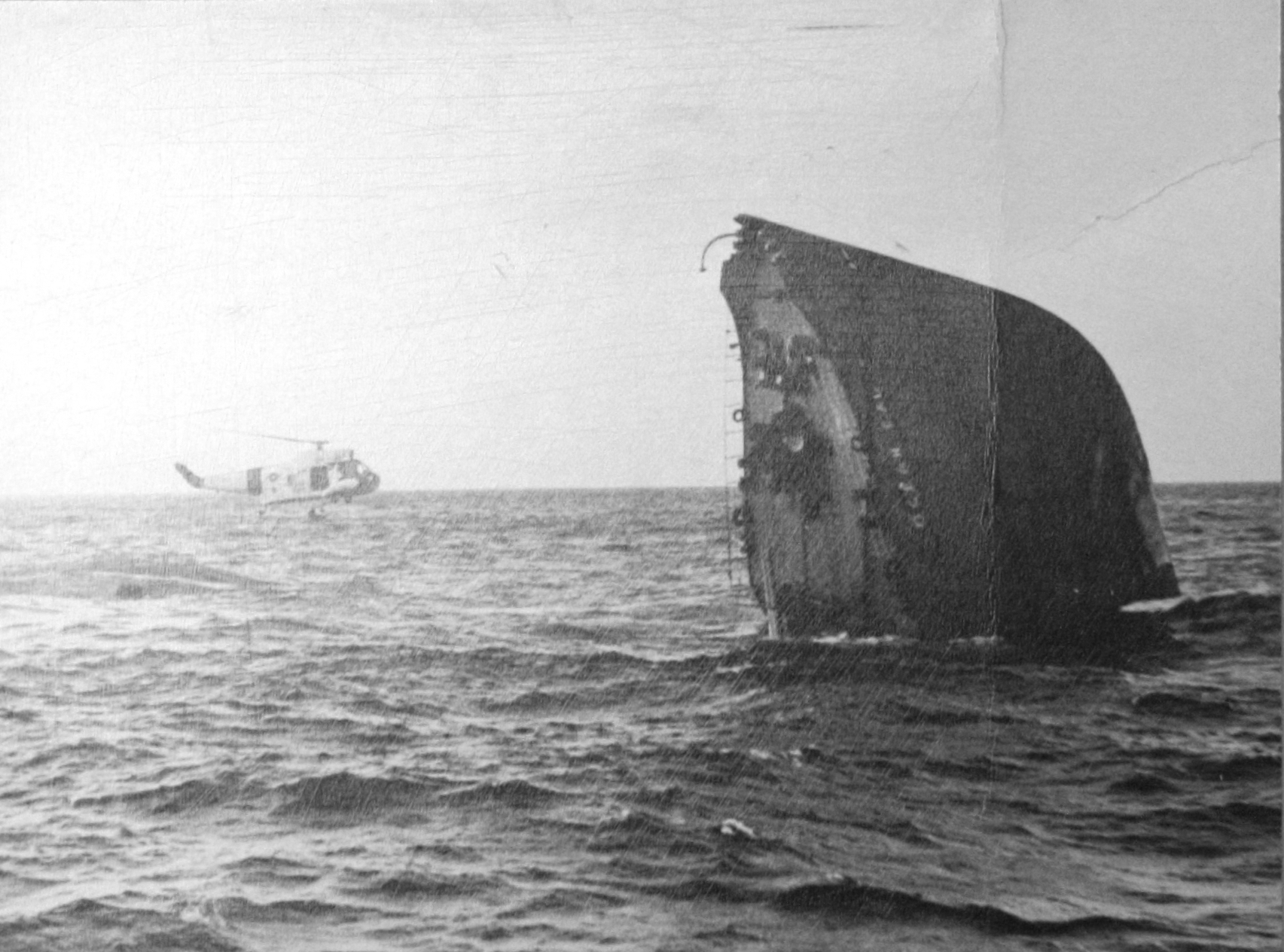





























































































































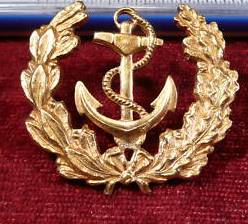











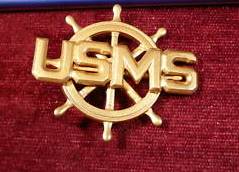



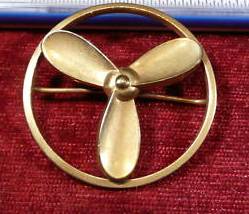










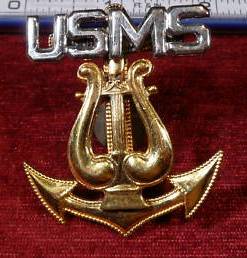



























 .
. 








Thank you for the heads up, Ian! I’m new to collecting MSTS pins, so I’m very glad you gave me a link to this page.
Thank you!
I picked up a pin back TBS badge years ago but was never able to ID it.
No makers marks. Looked vintage. Brass wreath with silver letters. Long pin that stopped at 90 degrees. “C”Catch
Now I know.